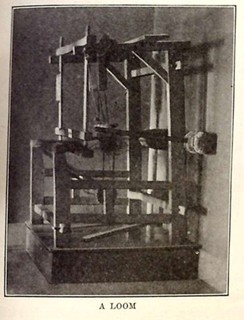
Volume 1
By
CLARENCE RAY AURNER

 |
IOWA STORIES Volume 1 By CLARENCE RAY AURNER |
 |
Transcribed by Sharon Elijah, submitted April, 2013
|
 pg 93 | When there were no great mills to make lumber and shingles to cover the better kinds of houses, men sometimes made them by hand. One old lady says that her father hewed them out with a draw knife and a shaving horse. These are strange words to people of today. Some carpenter, however, may keep a draw knife, but in using it he fastens the piece of timber in a vice. Very few carpenters, probably, would know much about a shaving horse. Such a machine held the shingle or timber upon which the man worked very firmly in a clamp. Little by little the shingle was hewed to the thinness and shape wanted. To be sure, these hard wood shingles seem very awkward when they are compared to the smooth cedar or pine shingles made in the great shingle mills of the United States. |
Return to Iowa Stories Volume 1 Contents
Return to Index of History Books
Back to Muscatine Co. IAGenWeb, Index Page
Page created May 6, 2013 by Lynn McCleary